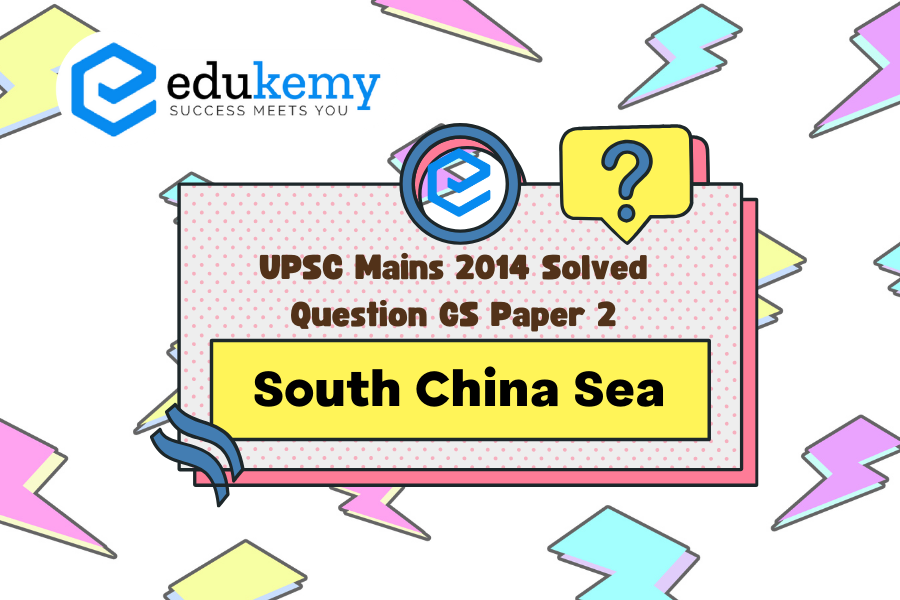In the dynamic geopolitical landscape of the South China Sea, tensions over maritime territorial disputes have become increasingly pronounced, underscoring the imperative of safeguarding maritime security to uphold the principles of freedom of navigation and flight in the region. Amidst this backdrop, bilateral issues between India and China have garnered significant attention, reflecting the complex interplay of interests and concerns between the two Asian giants. The longstanding border disputes, particularly along the Line of Actual Control (LAC), have periodically strained relations, manifesting in skirmishes and standoffs. Additionally, China’s assertive presence in the Indian Ocean, including its strategic infrastructure projects in neighboring countries, has raised apprehensions in New Delhi about encroachment on its sphere of influence. Furthermore, divergent geopolitical alignments, exemplified by India’s deepening ties with the United States and China’s expanding footprint in South Asia through initiatives like the Belt and Road Initiative, contribute to the intricacy of the bilateral relationship. Addressing these bilateral issues requires diplomatic finesse and a commitment to dialogue, as both nations navigate their respective interests while striving for regional stability and cooperation.
Tag: India and its neighborhood- relations.
Contents
Decoding the Question:
- In Introduction, try to give a brief description about the South China Sea and tension going between India and China in this context.
- In Body, highlight the Bilateral issues between India and China in backdrop of South China Sea:
- In Conclusion, try to highlight that the year 2020 marks the year of the 70th anniversary of the establishment of diplomatic relations between China and India and both are eager to resolve their differences.
Answer:
The South China Sea is an arm of western Pacific Ocean in Southeast Asia. It is south of China, east & south of Vietnam, west of the Philippines and north of the island of Borneo.It is connected by Taiwan Strait with the East China Sea and by Luzon Strait with the Philippine Sea.

Bilateral issues between India and China in backdrop of South China Sea:
- Factor in India’s own strategic calculations and strategic debates: India’s entry into the geopolitics of the region has been welcomed by ASEAN Nations except for China. The South China Sea is becoming a factor in India’s own strategic calculations and strategic debates, and India is becoming a factor in the strategic calculations of South China Sea states.
- Geopolitical Dimension: The acceptance and prevalence of the term “Indo-Pacific” among strategic commentators as well as diplomats has become synonymous with India’s entry into South East Asia and the Pacific theatre. Some analysts posit that India’s involvement in the South China Sea is reflective of Indo-Chinese Great Power rivalry.
- South China Sea and the Indian Ocean: China is not a power in the Indian Ocean, yet it is investing diplomatically and militarily in the region to become an influential actor in the region. So, for India, gaining access to the South China Sea is a way to balance China’s naval activities in Indian Ocean.
- The South China Sea and the Indian Ocean are interrelated, and India and China both do not want the other to increase its supremacy over any of the two international bodies.
- The power struggle continues between the two Asian giants in these waters, with the scales titling a little more towards China as of now.
- China has been contending that, despite the name, the Indian Ocean does not belong to India alone. India and other countries equally argue that the South China Sea does not belong to China alone.
- Relations between the United States and China continue to deteriorate.
- Talk of a new realignment of forces taking place, with the U.S. and China leading different camps. The rhetoric has begun to resemble the Cold War era and both sides are even willing to display their military muscle.
- This places several countries, especially India, in a difficult position.
- India’s present relations with China has provided Pakistan with yet another opportunity to fish in troubled waters, including the production of a “fake map” of Pakistan, which includes parts of Indian territory such as Siachen, Jammu and Kashmir and Gujarat much to India’s irritation.
- Galwan Tragedy: A “violent face-off” in the Himalayas occurred in June 2020 along the border in the Galwan Valley in Ladakh, where soldiers from India and China have been locked in a standoff was yet another low point between India and China relationship.
- Anti-China sentiment in India: Anti-China sentiment in India has grown, with people calling for a boycott of Chinese products in the country. But it will be difficult for India to suddenly sever or reduce trade and economic ties with its neighbor.
Looking back at the past 70 years, China-India relations have moved ahead despite wind and rain and gone through an extraordinary development path. The year 2020 marks the year of the 70th anniversary of the establishment of diplomatic relations between China and India. The two sides agreed to hold 70 celebratory activities to demonstrate the historic connection between the two civilizations as well as their growing bilateral relationship over the years shows that both sides are eager to resolve their issues amicably.
In case you still have your doubts, contact us on 9811333901.
For UPSC Prelims Resources, Click here
For Daily Updates and Study Material:
Join our Telegram Channel – Edukemy for IAS
- 1. Learn through Videos – here
- 2. Be Exam Ready by Practicing Daily MCQs – here
- 3. Daily Newsletter – Get all your Current Affairs Covered – here
- 4. Mains Answer Writing Practice – here


